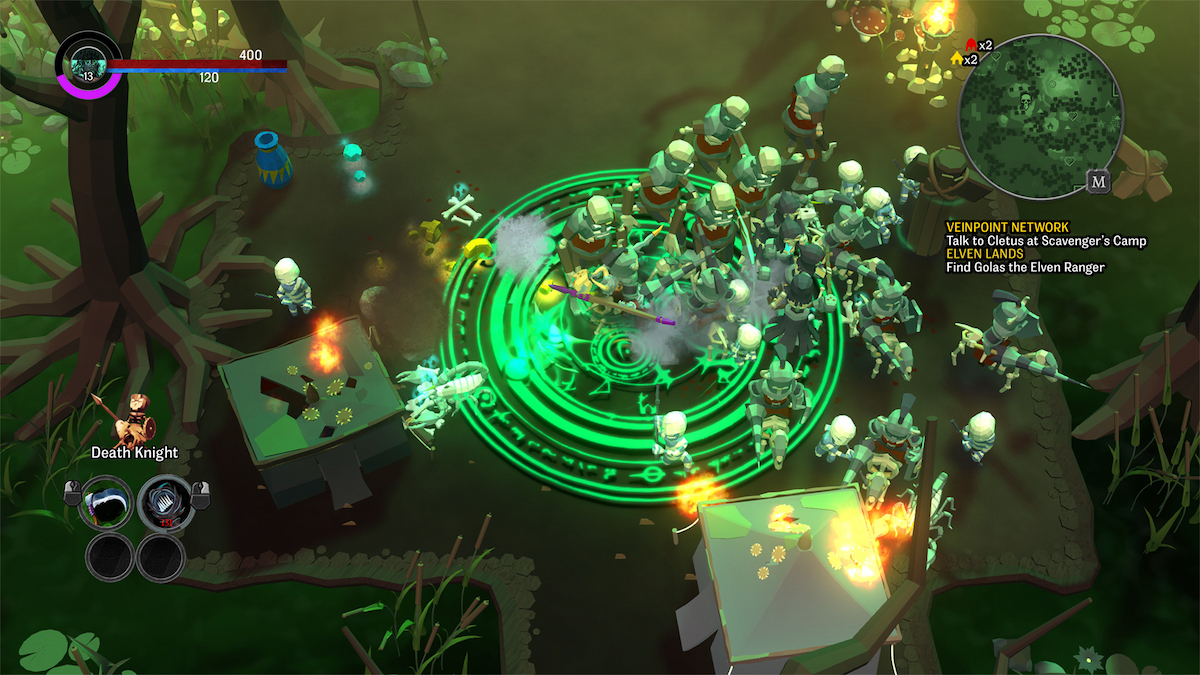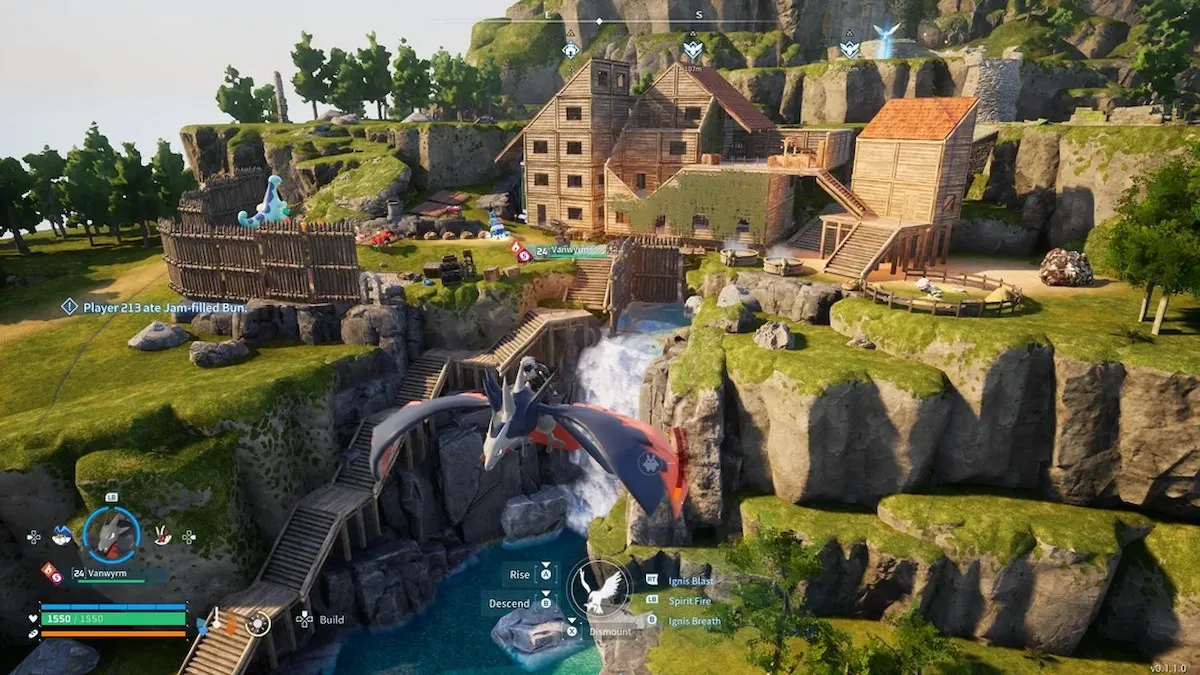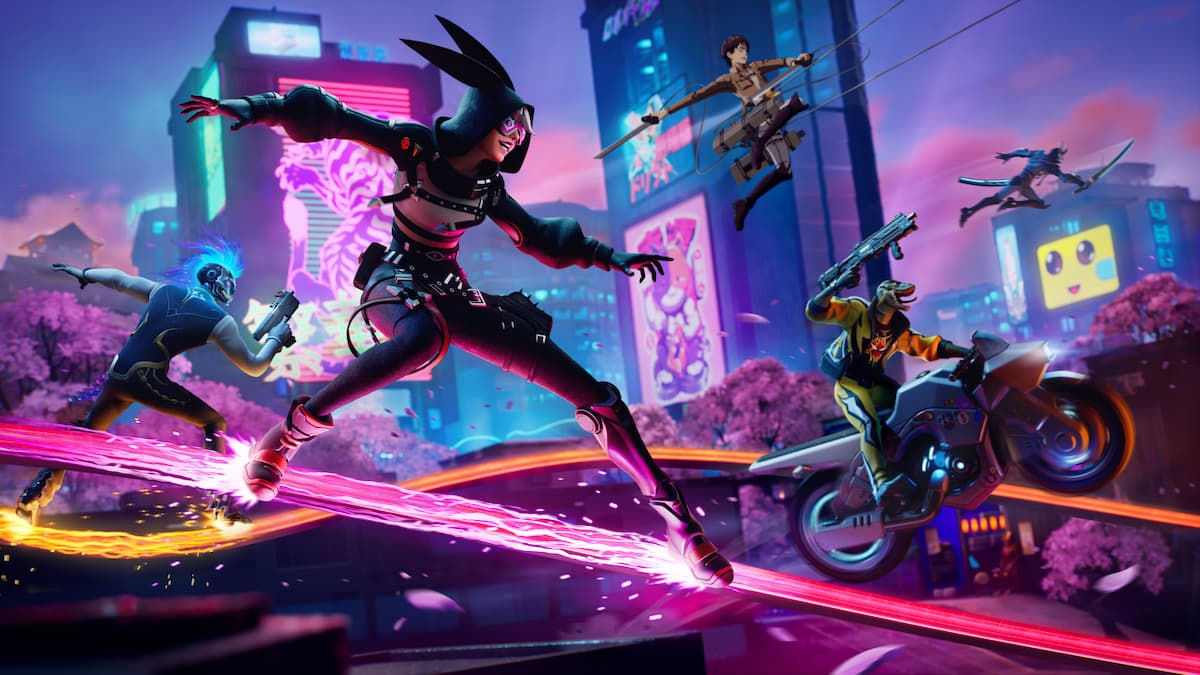It goes without saying that this article is packed with spoilers, so turn back now if you haven’t completed the game.

Similarly to Playdead’s last game, Limbo, much of the story of Inside is left up to interpretation of the player, and things are often left intentionally ambiguous. It’s a mind-bending game shrouded in mystery, but we’re here to try and help you make sense of some of the big events. Since the game’s release, fans have been coming up with some wild theories on what everything means. At this point there isn’t really a way to say one is definitively true, but that’s part of what makes Inside such a unique experience.
Inside starts without any explanation, immediately dropping you into a dark foreboding forest. As you trek forward you encounter some strange masked men with flashlights who make one thing clear: they’re here looking for you. The moment any of them spot you they chase you down and either choke you, or knock you out.
Our first hint at what’s really happening in the game, is shown when we make it out of the forest and into the slaughterhouse. Here we stumble upon a strange device hanging from the ceiling, with lifeless human forms lying in the background. Once you figure out a way to reach the device, the boy attaches it to his head and the forms spring to life.
Through mind control, the boy can solve various puzzles throughout the game using these devices. It’s also worth noting that before the boy can gain access to the first device, he has to evade a rabid pig, then pull some kind of a slug out of its rear. After doing this, the pig falls into a zombified heap in the corner. This could suggest that pigs were first used as experiements for mind control. With that information out of the way, let’s move on. From here we have a few different theories on what the rest of the game means, with some pieces of evidenced pointed out for each.
Mind Control Is a Purchasable Commodity

The first of the theories we’ll talk about deals directly with mind control, and hypothesizes that it has now become a marketable commodity. There are multiple scenes in the game where we see what appears to be sentient masked human-like characters, watching and observing the zombie-like humans. When you make your way into the final laboratory area of the game, we also see humans studying strange creatures in captivity, including the blob that you control at the end. There’s also a section where the boy is forced to blend in with the zombies and display basic motor skills like walking and jumping.
Taking this theory further, it states that the boy himself is the next step in mind control testing. Everything, including the security measures of facilities, were designed as a test for the boy. It could also explain why many of the scientists and humans are trying to help the blob escape at the end of the game. What reason could there be to put such intricate puzzles and security in these random places in the game, if not to test the boy and ultimately have him control the blob? Of course it’s just one of many theories, and things get even a bit crazier.
Inside Is a Metaphor For The Creation Of Life

Now here’s a bit darker of a theory stating that the entire point of Inside, is to be a metaphor about the act of creating life. This one comes from a Reddit thread about the game’s ending. There’s two particular parts in the game that don’t make much sense, which is what this particular theory draws on. First is the part where the boy is drowned by the strange underwater creature and hooked to a cable. To subscribers of this theory, the act is symbolic of the umbilical cord forming.
The second piece, the boy meeting the blob and entering its mass, is supposedly a parallel to the sperm entering the egg. After this, the blob breaks through the “uterine walls,” through the act of giving birth. It’s a theory that you don’t really want to think too deeply about, especially when you factor in the game’s secret ending where the boy literally pulls a plug. This is some dark stuff.
The Player Is Controlling The Boy Using Mind Control

Alright, here’s another wild theory involving mind control, this time breaking the fourth wall a bit too. Like the first one, this theory says that mind control has been made a possibility but instead of being limited to just the game world, mind control has spread to the player as well.
Using the controller as a device, the player is actually another being forcing the boy to act through mind control. You could say it’s in some kind of test just like in the first theory. Now you might wonder how this could be possible, as the boy himself uses mind control on other being s in the world. However, this point is strengthened by a couple of particular puzzles. There are two sections where the boy must use a mind control device to take command of a zombie, then move the zombie to another mind control device, which in turn takes command of another zombie. These puzzles show that it is possible for multiple layers of mind control in the world of Inside. Could it be that the player themselves are just another piece of Inside’s overall puzzle, playing into the testing of mind control?
Another offshoot of this theory says that the blob is controlling the player, who is in turn controlling the boy to free the blob. Once the creature breaks free and dies on the beach, the link is broken between it and the player. The player has completed their task, and the control ends throug the blob’s death.
The Blob Is Controlling The Boy

If you couldn’t tell already, we’re going to be talking a lot about mind control, so here’s another one from the Steam forums. This theory says that the blob is one final misguided experiment on the human’s part to perfect the mind control technology they’ve been working on.
Through these experiments the blob becomes a sort of hive mind, with the ability to propel its consciousness onto other beings. Because of this the blob has taken control of the boy in an effort to break itself free from captivity. It could also explain why a small child shows absolutely no fear in the face of such dangerous and freakish events. By collecting hidden spheres throughout the world, players can also unlock the game’s secret ending. In it the boy discovers a secret bunker with a strange device, and a giant plug inside. By solving a quick puzzle, players have the option to pull out the plug. By doing so, the boy slumps into a zombie-like stance and the screen fades to black. This could show the boy knew he was under control, and was searching for a way to break free.
Inside Is a Metaphor For the Body’s Immune System

The beauty of Inside is just how many different ways the events of the game can be interpreted. It’s full of symbolism and metaphors that can be taken multiple ways. Before we get to one final theory, here’s a quick one that suggests inside might be representing the functions of the human body when fighting off foreign attackers. Here’s what it says from user WilliamIn4c on the Reddit thread regarding the game’s ending.
“The game is an allegory of a human body. You are playing inside a body as a red blood cell. Eventually the boy sheds his red coat and becomes a white blood cell and removes the blob, which symbolizes a tumor. The tumor is then extracted from the body and dies outside of its host.”
This theory strangely makes sense, as after a harrowing journey the boy falls into the tank with the blob, loses all his clothing, and then enter the blob itself. Of course the normal ending sees the blob careening out of the facility, and dying on the shore just outside. There’s another bodily theory that talks about the boy and the blob both being a cancerous tumor over on Reddit.What a wild ride.
Inside Is a Metaphor For What a Video Game Is

Let’s finish things off with one particularly meta description for Inside. This one from Steam usur Talhante, o Bastardo do Futuro hypothesizes that the entire experience is merely an allegory for what a video game actually is. The boy is the player, the world is the game itself, the sentient humans are the developers with the laboratory being the studio, the zombies are clues, and the blob is/are theories about the game.
As players make their way through the world of a game, they become interested in what’s going on and try to piece things together. As you solve more puzzles involving the zombies/drones you find out bits of information that make you feel like you’re solving the mystery behind Inside. The developers are trying to interfere with you along the way and do things to halt your progress, but once you find the blob, which is an amalgamation of zombies and pieces of information, they beging cheering for you and helping you. You’ve found a theory, you’ve found the truth, and now the developers are helping you to the end.
When you’re in the lab you even see a miniature of the entire city you came through, and the area you’ll proceed to in order to reach the end of the game. This is representative of how the scenario and outline for a game is planned out. Of course the secret ending fits in as well, as a metaphor for players disconnecting themselves. If you pull the plug, or turn off your power, there is of course no more game to play.
The crazy part about everything is that more than one of these theories could be true, or none of them could be true. Playdead designed a game that they specifically wanted to be open-ended, decided by each player’s interpretation. The studio has even refused to comment on the game’s story so far, not divulging one detail as to which theory might be correct. All of it certainly makes your head spin, but which theory do you think sounds the most plausible? Do you have another interpretation separate from all these, that you think is true? Tell us what it is down in the comments below.













Updated: Jul 18, 2016 10:07 am